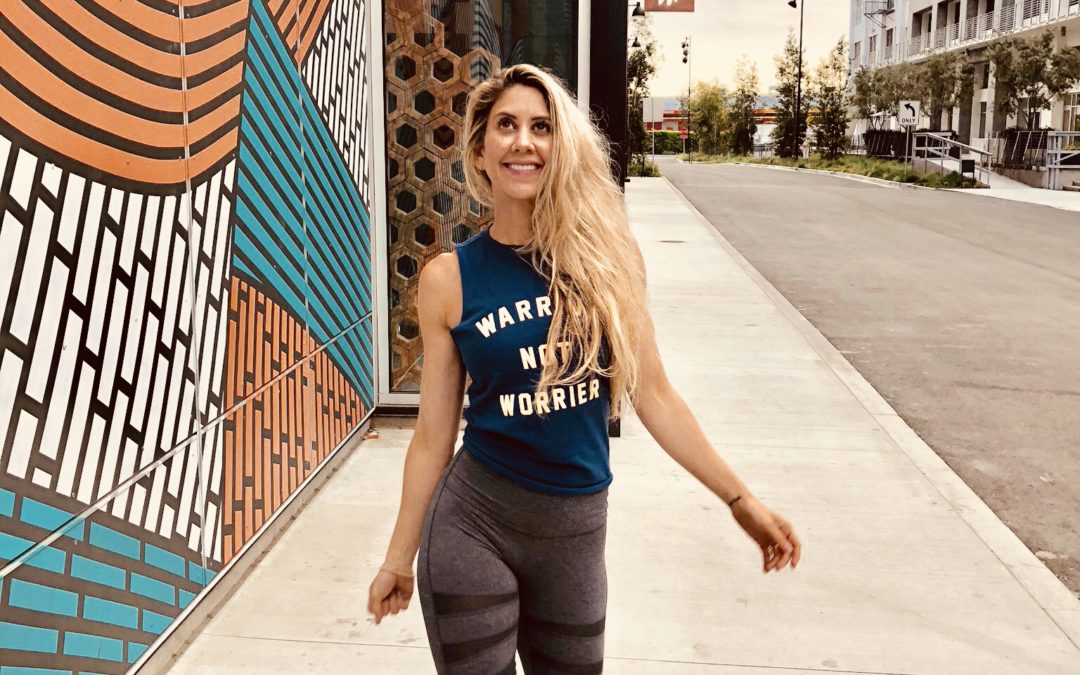
by Jasmine | Jun 22, 2018 | Yoga Therapy
June is a superpower month. Not only is it one of those cute 30-day months (30 days hath September style), but is also the one time we actually celebrate a day feeling and being super longer a.k.a. Summer Solstice for us Northern Hemi folks.
And don’t get me started on the fact it’s a woman’s name (only April and May share a similar honor), which makes it a very femme-focused time.
As our good friend June winds down, we’ve officially made it through the first half of the year! This signals a time to slow down, wake up and reflect on how the year is going for us.
If you think of the year as an HBO TV series (typically 12 episodes to a season), June is episode six, the natural halfway mark. It’s like you’re watching the first season of Game of Thrones (GOT) and now have to decide if you want to keep going on the same path – finish the season and see who else gets beheaded – or if it’s time to cut your losses and start a different show.
For some, getting to the halfway point is excellent news because we’ve been crushing life (loving GOT) and can’t wait to do it for six more months — woohoo! Let’s keep showing 2018 who’s the boss!
For the rest – me included – we’re on the fence and not sure if this is for us or if we should switch to different goals (another show) for the year.
Regardless of how you’re feeling about this year so far, if you’re a glass half full or half empty-er, June is still an inevitable check-in point to wake up and be more mindful about your year and here’s why.

Alright, June. Let’s refocus on my goals.
1. June reminds us that the year won’t last forever: Congrats – we’ve made it through half the year and have all the learnings of six months stored in our minds and bodies. But this realization also highlights that we now have 50% of the time to reach our goals and that can be scary.
Just like we start each yoga practice with an intention, the half-year mark reminds us to check in on those intentions and decide if they are really the ones we should keep prioritizing.
This is a time to get curious about any issues or fears we may have about the rest of the year and celebrate what we’re feeling really good about. We need to take an inventory of how we’re feeling and where we want to go before we keep going down this path or pick a new one.
Mindfulness is all about building this same type of awareness and paying attention to our inner and outer worlds. Is anything interfering with our goals or is something supporting you that you should keep holding onto? Are we just going through the motions and failing to truly commit? And how does this make us feel?
One of my intentions this year has been to launch a YouTube channel for yoga therapy videos. Exciting, right? Well, to date I haven’t even made one. And while I talk about it a lot, this month has made me realize that I have accomplished very little towards this goal.
As I start becoming more aware that I only have six months left in the year, it’s given me a whole new sense of prioritization and highlighted where I need to make shifts and soon!
2. Summertime gives us space: If you’re like me, summer hits and you’re ready to be outdoors and get out of town. A lot of us use these months to get away and recharge our batteries. And with a little more space in our schedules, we can take that time to connect with where we want the year to be going.
Just like meditation gives you mental space to free the clutter, so does the month of June.
Now that we finally have time to re-evaluate and re-engage with our goals, we can see what changes we need to make. This doesn’t mean shaming ourselves, but using some of this downtime to get honest about what we really want out of the rest of the year. Again, mindfulness is critical here as we slow down to really pay attention.
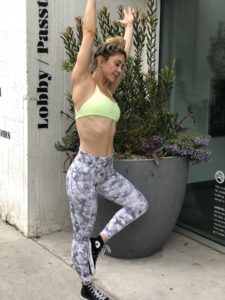
Using a heart opener to create space to feel what I want for the rest of the year.
This is similar to why the beginning of the year is a perfect time to make new goals – we have a little more which means a little more mental space to focus. June is no different and just comes with better weather and cuter outfits.
With a lot of my clients on vacation, I’m using this time to brainstorm ideas for digital content. I have a few extra hours and a lot of extra mental space to dig into this work and make it a reality.
This space is also revealing that I can’t do it all and my budding digital business will mean less time growing my in-person private client business. It’s been a hard realization but one that I can now embrace since I’ve had a little time to get clear.
3. It’s easy to be inspired by the heat and fire: Longer, hotter days and melting ice cream cones are a signal that it’s time to get moving! All of the heat around us creates an energetic momentum to wake us up to what we really want.
While we may feel we’re slowing down, the environment around us in full swing with hot days and warm nights and that’s the best time to get back in our groove.
Now, that we’ve had a chance to re-evaluate our goals and the space to get creative, we can use the playfulness of summer to help us “dare greatly”. Taking risks in summer is like jumping in the water with both feet! It may be scary at first thought, but the feelings are backed up by the excitement and comfort of how good it will feel.
I’m using this time as my mental “summer camp” and exploring the digital side of my business. With a more mindful approach, I can focus my energy on what will drive the results.
I’m finding the power in the playfulness and asking a lot of “what ifs” to push me out of my comfort zone. That means researching and connecting with experts in the digital space and lots of experimentation!
Just as thousands of kids are using this time of year to learn how to ride bikes and dive into the deep end, I am also finding ways to challenge myself through the power of play!
4. Good weather means good vibes: Combine the space from #2 and heat #3 with the vitamin D boosting sunshine and you get an overall “feel good vibe” that needs to be harnessed. Vitamin D has been proven to fight disease and reduce depression, which means we’re more likely to feel happier and healthier with the extra dose of sun.
When we’re feeling good, we can be more free and fluid to be our authentic selves. It’s an inspiring time that helps us see our lives and opportunities through new sunnier lenses of hope, and sometimes we really need that!
The positive energy makes it easier to be more mindful and reconnect with those activities, goals, and values that will bring us the most joy for the remainder of the year.
It makes total sense that some of the angst that plagued us earlier in the year has magically faded away. Some of my limiting beliefs and triggers kept creeping in and I lost a little steam. Thoughts like, “you waited too long to go digital” slowed me in my tracks and halted my growth. I got caught up in a shame game, which pushed me further away from my intention.
But this good-mood season is helping me be mindful of these thought patterns, practice more compassion for my journey, feel motivated for what’s to come! I’m feeling excited and curious about what’s possible and refocusing on doing the work. I’m getting out of my head and into the world of doing.
We are such creatures of our environments so make good use of that shifting weather and wake up to the possibilities ahead in the next six months.

by Jasmine | Jun 7, 2018 | Yoga Therapy
Time to talk triggers! Oh, the dreaded “t” word. At some point in our lives we will all have them, no one is immune. Even Oprah has them – so you’re in good company.
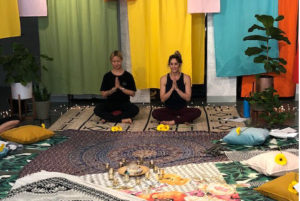
Setting an intention with Mel Mah to get clear about our triggers.
But what is a trigger? A trigger is an external event, situation, person or activity that sparks an emotional or physical reaction within us. Something happens and a wound, memory or experience re-opens and in that raw and exposed moment you feel A LOT. Often times we connect triggers to feeling of discomfort or dis-ease. But the truth is, there are just as many triggers that bring us a sense of joy, ease, safety and comfort as there are one that make us feel anxious or all “hot and bothered”.
Because I get a lot of asks around how to better manage aggravating triggers (as I like to call them), I will focus this blog on how we can explore these a little deeper.
Aggravating triggers are ones that can do just that— aggravate. This can show up in pain, sadness, increased stress, frustration and my big one, anxiety. And it’s not just the symptom or feeling that can throw off our day or week, but our response to to the trigger can greatly effect our life.
For example, have you ever gotten into a confrontation with a co-worker, friend, loved one, or even stranger on the road because you were triggered? Do you remember how that effected your day? Boy, I know I have and it’s always ended with me feeling unmotivated, fatigue, and unhappy. Some reactions can even send you down a spiral of doubt, fear, loss, you name it.
And to add fuel to the fire, some of the most common aggravating triggers related to stress, pain, and anxiety are ones we cannot avoid:
- Work – Commuting to work (traffic!!), being at work (sitting…ugh), and having deadlines at work have the potential to trigger our worries, increase our stress and create lots of tension.
- Family – Being around specific family members can make us feel more stressed, frustrated and annoyed than usual.
- Life changes – A change is just experiencing something new, but the uncertainty and lack of routine can make us panic even if it’s something we wanted (like having a baby).
- Social media – I’m throwing this one in because it’s given me some serious anxiety lately! Scrolling through “the ‘gram” and seeing everyone living their best life can trigger all sorts of comparisons, fear of missing out, lack of confidence, you name it.
At the core, a trigger is a habit. There is cause – your mom calls, your boss sends a rude email, you’re stuck in traffic – and at some point you learned or trained yourself over time to react to that fear – you panic, you get defensive, you scream, you shut down. Your reaction was initially part of your neurological “flight or fight” response to keep you safe, but is now a pattern (a likely old pattern) you are used to doing as a way to survive and protect yourself.
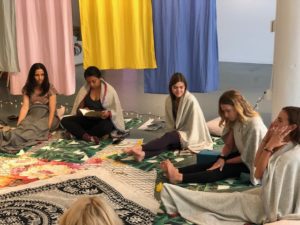
Workshop attendees getting deep into what’s underneath their triggers.
We all have triggers because life is filled with ups and downs and eventually we all experience some sort of trauma or challenge. That could be the emotional trauma of losing a loved one, being bullied, witnessing your parents fight or any time you have been made to feel that you’re not enough.
The good news is that since triggers are habits learned over time, we can unlearn them too! The bad news is that they are some of the hardest habits to break because many are embedded in how we see the world and ourselves.
Let’s look at an example. One of my biggest aggravating triggers is having a messy house, which triggers feelings of panic, anxiety, and a loss of control. It dates back to growing up in a chaotic house with lots of noise and fighting. So whenever my home is messy – looks chaotic and even feels chaotic – I’m taken back to that feeling of being a little girl who doesn’t feel safe and that makes the grown woman version of me feel unsafe too.
You might be thinking, “of course a messy home elicits some sort of reaction.” But I’m pretty sure that around the world, millions of people have messy homes and don’t launch into a state of panic and extreme unease. Now what’s interesting about this trigger, is that it’s very specific to my home. I don’t feel panicked when my friend’s home is messy or a department store is messy.
Over the years I’ve done a lot of work on this one, so I am definitely more forgiving when things aren’t “perfect” and because I share a home with someone else (my husband), I try hard to not nit pick and get overworked (stay tuned for another blog on working through your triggers). But the first step to even working through those unresolved feelings is to “notice” what your triggers are. This requires a little mindfulness and a lot of curiosity.
Here are 3 easy and eye-opening steps to get you started: Stop, Breathe, Feel. Disclaimer: You likely have dozens of aggravating triggers, but let’s just focus on spotting one.
1. Stop and observe the external: The very next time you feel the pit in your stomach, worried feelings, racing heart, achey back – stop and pay attention. You don’t have to do this immediately, but within the day take stock of your external circumstances. Perhaps, there was an external event that happened right before your feelings began.
What are you doing? Who are you with? What’s going on around you? Notice all of the details of your environment, your trigger is lurking in one of those areas. If you were talking to someone, what did they say to you? Get out a piece of paper or your phone and write down the details for later.
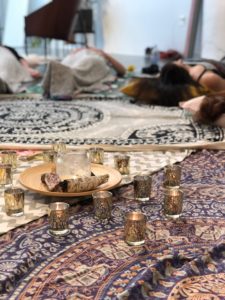
Meditation helps you practice breathing and uncover the layers of feelings.
2. Breathe to capture the moment: Very important step. You need to breathe so you can slow yourself down and get curious about the event. If you have a meditation practice, use that to meditate for at least 5 minutes. If not, try a 5-4-5 breath to help you focus – Inhale for 5 counts, hold for 4 counts, and exhale for 5 counts. Repeat this at least 3X to ensure you are clear enough to proceed to the next step.
3. Feel what’s going on internally: What exactly are you feeling? Yes, bothered of course, but what specifically? Are you feeling bad about a conversation that didn’t go as expected and now you’re worried that you’ll get in trouble at work? Get curious and detailed about each feeling and micro-feeling that is going on at that moment and the story you’re telling yourself about those feelings. Once you’ve figured this out, map back to the items from Step #1 and start making the connection.
Give this exercise a try a few times and see what you learn about yourself and what’s triggering you. Remember, when noticing triggers it’s important to observe and remain curious about both those that aggravate and those that bring ease. This type of mindful observation can lead to some really clear answers around who we are and also invite in a deeper sense of self-acceptance and self-compassion. Comment and let us know what you discover!
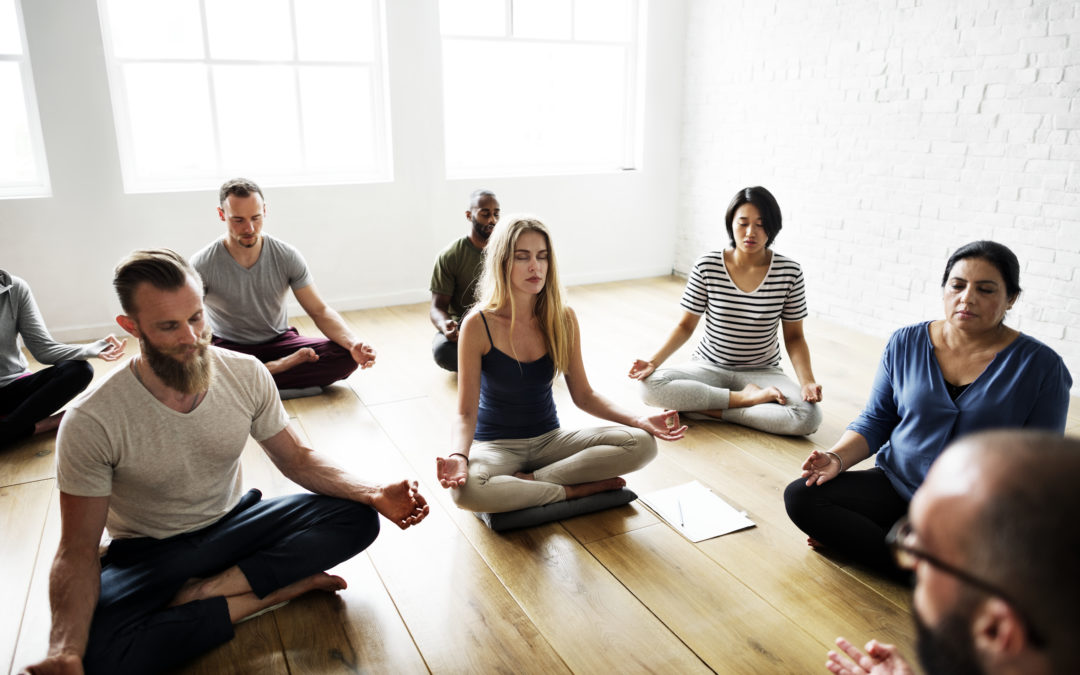
by Jasmine | May 25, 2018 | Yoga, Yoga Lifestyle, Yoga Therapy, Yoga World
Do you remember the very first time you did yoga? If you’re like me, it was in a group class that my friend “swore by.” It was in these group yoga classes that we learned the basics of yoga: our first downward dog, chair pose, nostril breathing and the bliss of our very first savasana.

Group classes are awesome for yogis of all levels and intentions and most teachers provide a general teaching style to address the ranges of needs.
Unlike group classes, yoga therapy puts the individual at the center and it’s all about the person’s specific need to heal the mind, body and spirit. Each session is private (or at most a small focused group of 3-4 people) and targeted to address a goal like reducing stress, managing anxiety, breathing better or easing chronic pain.
As a Yoga Therapist, some of my clients have practiced yoga for years, yet are only able to heal their anxiety, depression, stress or back pain (to name a few), through our one-on-one work.
But what if you’re ready for a more healing yoga practice but not quite ready to see a Yoga Therapist? Have no fear, there are a few ways you can turn up the healing in a large group setting. Check our list of simple ways to approach your next group class for a more therapeutic and personalized experience.
Before the class
- Decide what needs attention: Before the class starts, I always encourage my clients and students to take a mental inventory. Notice what’s showing up for you (sensations, emotions, energy, etc). What’s been bothering you or what would you like to explore? Take a few minutes to check in with yourself and observe what feels tight or contentious. Also, take notice of what feels good and at ease. Maybe you’re having shoulder pain or work has been extra stressful. Maybe your feeling a sense of relief or your feet feel relaxed. Then, based on your self discoveries, set an intention to support whatever it is you are needing that week, day or in that moment.
- Commit: Whatever you picked from the above exercise, commit that as your “healing intention” for the rest of the class. For me, I’m always working on ways to manage my anxiety and often notice anxious tension in my body each time I go through my personal inventory. Because this is a reoccurring theme, this month I decided to focus on my relationship to fear and worry throughout my practice.
During the class
- Remember that healing intention: It’s pretty much guaranteed that while you’ll be “in the flow” the chit chatter of the mind will start to creep in. “Shoot, did I return that email?”, “What am I going to have for dinner tonight?” Don’t worry this is natural and you’re not alone. It’s simply your subconscious mind and its tendency to pull you away from the present moment. Lucky for you, you set your healing intention before the class so you’ll tap into this in these moments.
- Slow down your movements: Be aware of the transitions coming in and out of poses just as much as you are aware of the alignment in the pose itself. Notice what your movement patterns are and see if you can offer something different to keep things fresh and supporting your intention.
- Close your eyes: If comfortable, close your eyes as you move through a salutation or while holding a more familiar pose like Warrior II. This encourages the attention to continue to move inward and also invites in space to let go of judgment and just be with what is.
- Honor your body and your energy level: Modify poses, skip vinyasas, or drop into child’s pose at anytime. Remember, you set a healing intention and need to honor it so be patient and compassionate. Do not judge yourself for these choices! There is no “good” or “bad” in the healing process, there is just what you need.
- Keep your eyes on your mat: Remember, this class is all about you and your healing intention, so let’s keep it that way. It’s easy to get caught up in what your neighbors are doing and follow their lead. However, when we focus on mimicking someone else’s practice with lose the authenticity of our own.
After the class / in between classes
- Meditate on your healing intention – Before the class closes off, take a moment to come back to your healing intention and notice how it now feels in your body. Observe the impact your practice has had. Is the pain or fear better or worse? Has it moved? Maybe it’s the same? Are you more at ease? Whatever you’re noticing, know that this is your perfect experience.
As you move about life, explore integrating this type of reflection and awareness into your daily routine frequently reminding yourself of your intentions to heal.
Yoga is an individual practice, even when you’re surrounded by people on and off the mat. I hope these steps invite you to make your practice and little more you and allow you to dive deeper into your healing needs.
Do you have other tips for taking your practice to the next level? Share with us below!

by Jasmine | Apr 5, 2018 | Yoga Therapy
Me: “What are you doing this week?” Everyone I know: “I’m spring cleaning!” If December and January are for planting our goal setting seeds, then March and April are for cleansing and offering space for those seedlings to blossom. It’s like the natural reaction for surviving the brutal winter that was filled with cold days, the flu, and the rough road of trying to get that resolution to stick. Everyone around me is a buzz (including the bees) with cleaning out their closets, decluttering their shelves (visit our blog for ways to make your home your sanctuary) and even hitting up the Goodwill like it’s the hottest place to be.
In these spring months, we are reminded of new life, rebirth and refreshing ourselves. Spring is a time when things come into bloom, which is why it is important to cleanse our internal and external environment in the effort to offer a livable space for the new to take host. I mean, think about it, would you want to move into a new home that was unkept and had remittance of the last tenant? I know I wouldn’t. During Spring, it is essential to recognize that there is time for gratitude (lessons learned, experiences had) but also for letting go.
In yoga, this time of year reminds us that our physical surroundings aren’t the only things that need to be cleansed. Our insides, our minds, bodies, and energetic spirit are also due for a refresh.
Cleansing the Mind: Notice Patterns
This is where I always start. Our thoughts are a powerful tool and can literally change the environment of our bodies, meaning they can change the way our cells respond and grow. They are at the center of everything we know and experience. Thoughts create our perceptions or (more often than not) our misperceptions. So, starting here for your cleanse will pack the biggest punch. I like to think of the mind as the captain, the body as the ship and your physical space as the waters of the ocean.
Cleansing the mind is all about working to free yourself from non-serving thoughts and self-judgments. I take this time to identify those old patterns of thinking that are keeping me down and limiting my growth. We (on average) have ~50,000 thoughts on a daily basis, 90% are repetitive and 80% of those are negative. In short, that’s a lot of negative and repetitive thinking! The steps of thought cleansing may take a little more time than deciding which sweater to keep, but believe me it’s worth it.

Put pen to paper and observe thoughts from a different perspective.
As we practice mindfulness, we can watch our thoughts with non judgmental attention and notice which ones are negative and/or repetitive and cleanse those thoughts to make powerful changes to our subconscious patterns.
- Step 1: Grab a piece of paper or a journal. Set a timer for 3 minutes and write all of your thoughts down. Just pay attention to what you’re thinking and get them out on paper stream of consciousness style.
- Step 2: Notice the patterns. What are the thoughts coming up again and again. Since I’ve been trying to become more vulnerable, my ugly sweater version of a thought has been that “people only trust perfection.”
- Step 3: Spot which ones are negative and not true – circle them.
- Step 4: Scratch out the ones that are not serving you. All you are left with are the positive thoughts and possibilities.
As we cross out the negative thought patterns, you are cleansing and making space for a new thought pattern to take host in that mental space. And since our thoughts are so powerful, the more we can get cleaner more serving thoughts, the more our bodies and environments will bloom in and manifest in the life of our dreams. Check out our last post on the rule of little and often to gain more tips on how to make this practice truly stick!
Cleansing the Body: Breathe it, Twist it
Now that we have our minds ready, we’ll move onto the body that is the ship. This is the vessel in which we navigate the world and is critical to also tidy up to feel centered and balanced. There are many things we can do to detox in this area, from diet, exercise, massages, facials, etc. One less common way (yet effective) is by finding ways to stimulate heat.
Heat, or fire, is the element that cleanses and burns away unwanted energy. It lives in your belly with nearly all our vital organs. When we stimulate that heat and cleanse from the belly, we can stimulate more passion and more motivation. Breath and twists are great cleaners for the body. Let’s see why.

Try this single leg twist before getting up to stimulate digestion and improve circulation.
What breath builds heat?
Ujjayi breathing, also known as “victorious breath” has become the signature breath practice in most vinyasa flow classes. Why? Because the breath technique challenges your respiratory muscles and encourages you to focus your attention which results in a quick yet gentle build of internal heat. I’ll admit, it takes a few tries to nail this one down, but it does add a wonderful heating element to your movement practice.
Begin in a comfortable seated position. Take a few gentle breaths in and out through the nose to neutralize your natural breath pattern.
Step 1
- To start moving into Ujayii breathing, inhale through your nose.
- As you exhale, open your mouth and make the “HA” sound (like you’re fogging up a window). Notice the breath graze the throat on the exhale.
- Repeat 3x.
Step 2
- Soften the lips to close.
- Inhale through the nose and exhale through the nose, but this time maintain the same constriction in the throat created by the “HA” sound as when your mouth was open.
- You will continue to hear an ocean-like sound as you breath in and out through the nose.
Why twist?
Yoga twists are detoxifiers because they directly impact our vital organs. When we twist, we detoxify anything that is stuck in that space. Think of the shape your belly creates – it’s like ringing out a sponge. This idea comes from B.K.S. Iyengar’s “squeeze and soak” theory. The motion of twisting the spine squeezes the muscles, spinal disks, and abdominal organs. When you release, we push out old blood and make space for new blood to flood in and nourish the organs and aid digestion.
In twists, we are not only finding spinal rotation but we are also creating spinal length in between the bones. This newly created space can stimulate life and release stagnant energy.
Cleansing your Space: Grab your essential oils
Okay, I know I promised a mind-body blog only but I had to bring in a little shout-out to our physical spaces. Essential oils can be like little pockets of positivity to move towards optimism. So if you’re still dead-set on cleaning house this spring, consider including essential oils into the mix.
Oils enhance positivity because they can shift our moods. Diffusing oils creates a sense of balance, harmony and a more uplifting atmosphere at work or at home. When you smell an oil you instantly feel more uplifted and energized because of their many healing properties.
My favorite oils for spring cleaning are Grapefruit, Basil, Frankincense (an ancient and powerful purifier), Rosemary and Lemon.
Need a recipe for a custom spring cleansing oil blend? Here’s one of my go to’s!

Create your own custom blend that invites positivity and growth.
In a separate dropper bottle add:
- 10 drops of Grapefruit
- 8 drops of Lemon
- 4 drops of Frankincense
- 4 drops of Basil
Store in a cool dry place and use throughout the spring season to nurture positivity and growth.
So, as you get rid of those worn down heels and pilly sweaters, we hope you use some of these tips to also invite spring into your mind, body and space.
How are you preparing for the spring? Share in the comments for a chance to win a custom spring essential oils blend!
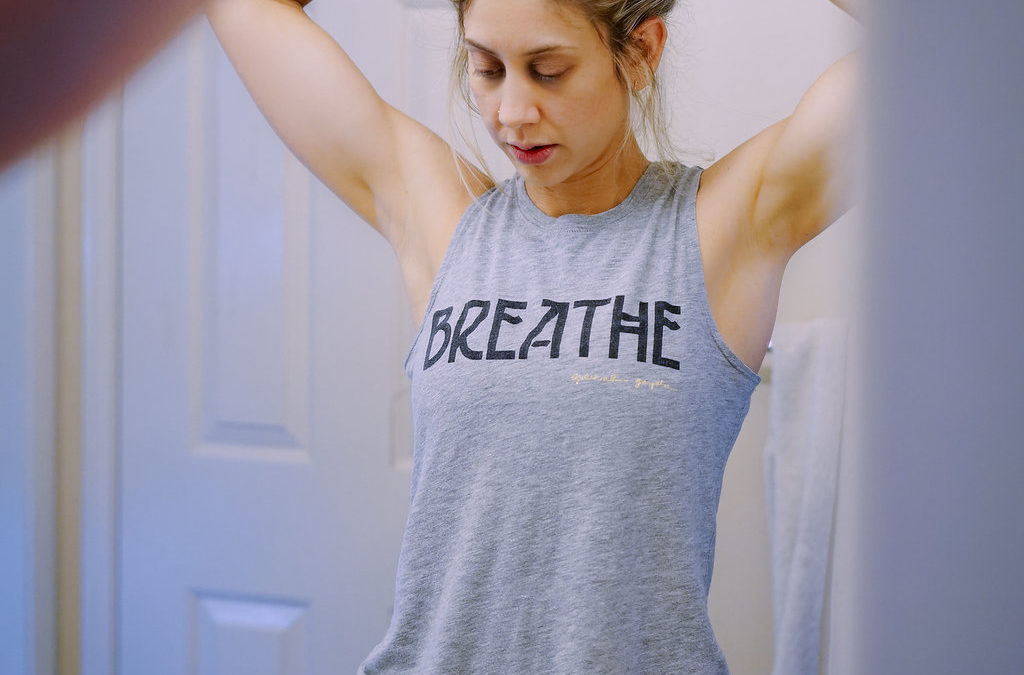
by Jasmine | Mar 22, 2018 | Yoga Therapy
I used to think people only trusted perfection so I shied away from getting too personal on my blog and in real life. I know, I know, what’s the point of having a blog if you’re not going to share your personal stories? I was stuck in the habit of fear that sharing my flaws and demons would discredit me. I knew that I needed to be more vulnerable but I also knew that sharing some of my messy truth might make me recoil into my shell.
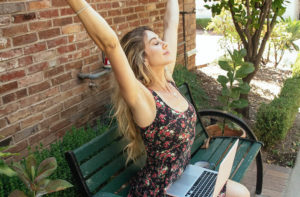
Making the choice to gradually stop fearing the truth and pain of my own journey.
Instead of going full throttle and posting my entire life story on Instagram, which would feel like a chore, I started small but consistently.
- I first opened up within short Instagram captions. It was a small but safe step since I figured people wouldn’t read the entire thing.
- I then added some personal details on a blog, revealing that I had shingles. My little fingers were shaking as I wrote that but I put it out there into the world.
- Then I began to open up to live crowds like at our “Treat yo’self” event. I shared about my last relationship, struggles with co-dependency and ugly breakup. It was only a short 3-minute story but still a little but critical step to practicing vulnerability. After I spoke, several people thanked me for being so authentic and vulnerable.
I’m gradually integrating this new more vulnerable me into my story by following the rule of little and often. I use this mantra a lot with my clients who are trying to decrease stress, practice mindfulness or change any type of habit.
What is the rule of little and often?
The rule of little and often is about integration and how to develop consistency to gently change our habits. This comes from Jon Kabot Zinn (“the father of mindfulness”). It’s the one sure-fire way to implement change because the more often we do something, the more we’ll integrate that thing into our life and sustainably shift our patterns.
If we’re used to doing something the same way every day, then the only way to shift that behavior is to start doing something small just as often. This will allow the change to feel more like a choice and less like a chore.

At the Bumble Hive LA, opening up in public about my past for the first time. Just a little at a time.
This is similar to the idea of crowding-out, a go-to nutritionist strategy. The premise is simple: Don’t focus on what NOT to do because that can become overwhelming and invoke a “funk-like” state. Think about the last time you tried to drastically change your eating habits over night. “Hangriness” set in immediately and you became grumpy, annoyed and ready to give up, which is what a lot of people end up doing.
A more gentle way is to focus on what you need to ADD in and then gradually crowd out those items or behaviors that are no longer serving you. For example, if you’re goal is to decrease stress, don’t dive straight into an hour long meditation practice or quit your hectic job Jerry Maguire-style. While both are tempting, you might end up frustrated, full of regret and in a funk.
Instead, I recommend that my clients start adding a 2-minute meditation 3 times a week and then see how that feels. Quitting your stressful job may be the right choice eventually, but until you’ve gradually shifted your patterns you won’t know if it was the job or something else that was contributing to your stress.
Little and often, not big and all at once. This can be applied to anything if you follow these simple steps.
1. Notice your Symptoms
How do you start discovering that you need to take a breath or that you’re even in a stressed or sub-optimal state than the one you’d like to be in? Most of the time we don’t even notice that we’re in need of any mindfulness because we are so used to constantly being stressed and no longer view our chronic symptoms as symptoms at all! We basically adapt to that state and stop asking “could I feel differently.”
Little and often asks that once a day you just start paying attention to some of the common symptoms of the habit you want to change. In the case of stress, that could be:
- shortness of breath
- headaches
- neck pain
- drowsiness
- irritability
It’s hard for us to recognize that we’re in a stressed state, but we can definitely recognize when we have a headache or any other types of physical discomfort. And that can be your trigger for taking care of yourself.
2. Connect with your why
You’ll then want to find out why. Find out why you want to reduce your stress levels, this will help you implement the little and often rule. A few common ones for stress are that your health is at risk, you’re struggling at work, or your relationships are suffering. Get really clear with what’s motivating you and why the change is truly needed. This will be your intention that you can tap into to keep you consistent.
Brene Brown talks a lot about this in “Rising Strong”. Identify what you are feeling – that’s the trigger – and then get curious about why you are feeling it. Where does this feeling come from and why do you want to change it?

Checking in with my why to keep me focused on the results.
In the example of my quest for vulnerability, I felt scared each time I thought about telling my story about my Ex-partner. I was scared about revisiting the disappointment of the break-up and even more frightened about what people would think if they knew I had sacrificed my own self-care. The “why”/motivation to change was to more publicly heal from that shame and also show-up more openly for clients and loved-ones.
Knowing your why and being super clear on what’s underneath your desire for a habit change will help you take those little and often steps to healing and habit change.
3. Progressive integration
Now you actually have to do something differently, but again it’s just a little bit of different on a consistent basis. Start by first finding those times in the day where it makes sense to incorporate your new pattern. The best time to practice a new habit is during those little “dead spaces” when you’re usually browsing online or Insta-scrolling through your phone. Do you spend a lot of time sitting in traffic, in between meetings or waiting to shuttle your kids to different activities? You’ll want to capitalize on those moments to try out your new habit.
In the case of reducing stress, use the moments in traffic to practice new breathing techniques. Take a few minutes to notice your breath and the try slowing it down just for a few minutes. This is such a small exercise, but if you do it each time you’re in traffic – which for me is all the time – those moments start adding up.
The same goes for adding more plants and vegetables to your diet. No need to go full-on vegan tomorrow. Instead use your next snack break or time waiting for your Uber to eat a piece of fruit or something with zero animal products.

Getting honest with myself during my in between moments helps me practice my new habit.
For my vulnerability habit, I use my time in traffic to practice sharing my story to myself. I’ll literally talk to myself and say out loud the things I’m most afraid of. I also journal to get my fears out on the page in between virtual coaching sessions with clients.
As you take advantage of these little moments, you’ll start noticing that you’re spending less time on the behavior you were trying to move away from. It’s the consistent implementation that makes you more aware, see results and shift your patterns.
This is where we move from chore to choice. That’s a shift in perspective so that you are choosing to focus on your self-care instead of getting in the funk of feeling like you’ve included another chore to your growing list.
When we’ve been doing something or thinking something for 10 – 20 years, like me and my fear of vulnerability, it will take a lot of constant gentle shifts in the opposite directions to make these new changes stick. You don’t have to undo everything – no all at once life overhauls here. It’s all about the moment, taking advantage of it to incorporate a small new shift and then being grateful that you did.



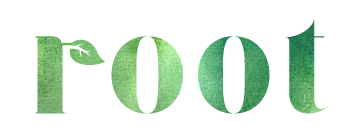















Recent Comments